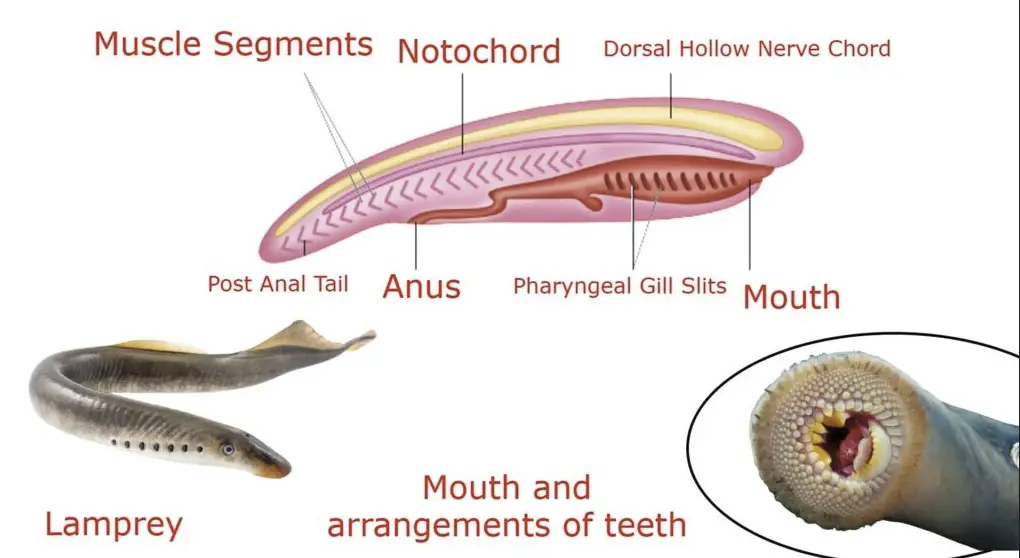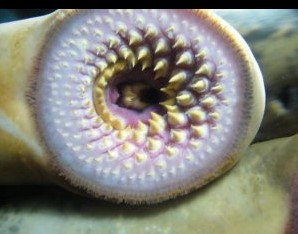The evolutionary history of vertebrates presents a fascinating narrative, marked by significant divergences that have led to the rich biodiversity we observe today. At the heart of this narrative are two groups: Agnathans and Gnathostomata, representing pivotal points in the evolutionary timeline. These groups not only exhibit fundamental differences in anatomy and physiology but also highlight the adaptive strategies life has employed to thrive in various environments.
Agnathans, commonly known as jawless fishes, include species such as lampreys and hagfishes. They are characterized by their lack of jaws and paired fins, setting them apart from the more evolutionarily advanced Gnathostomata, or jawed vertebrates, which include a vast array of species from fish to humans. The primary distinction between these groups lies in their jaw structure, with Agnathans displaying a primitive mouth without jaws, and Gnathostomata showcasing a complex jaw system that has enabled a broader range of feeding strategies and ecological roles.
The exploration of these differences not only sheds light on the evolutionary paths that have led to the current diversity of life in aquatic and terrestrial ecosystems but also offers insights into the adaptations that have been crucial for survival and success across millions of years. By examining the characteristics, habitats, and roles of Agnathans and Gnathostomata, we can gain a deeper understanding of the evolutionary pressures and innovations that have shaped the vertebrate lineage.

Agnathans Explained
Definition and Characteristics
Agnathans, often known as jawless fish, represent the most ancient group of vertebrates. Unlike other vertebrates, agnathans lack jaws and paired fins, two characteristics that define most aquatic creatures today. Instead, they possess a simple, elongated body and a cartilaginous skeleton, which provides flexibility and support without the weight of bone. Their mouth is circular, equipped with rows of keratinized plates or teeth, used for suction feeding or scavenging.
Evolutionary Significance
The evolutionary significance of agnathans cannot be overstated. They are considered living fossils, providing a glimpse into the early stages of vertebrate evolution. Agnathans demonstrate the basic vertebrate plan and are pivotal for understanding how more complex vertebrates, including those with jaws, evolved. Their existence confirms that the vertebrate jaw evolved after the establishment of the basic vertebrate body plan.
Examples and Habitats
Lampreys and hagfishes are prime examples of agnathans. Lampreys inhabit both freshwater and marine environments, often undergoing a migration phase for reproduction similar to some species of salmon. Hagfishes, conversely, are strictly marine and are found in cold oceanic waters around the world. Both groups play essential roles in their ecosystems, with lampreys acting as parasites or predators and hagfishes as scavengers, cleaning up dead and dying fish.
Gnathostomata Overview
Definition and Features
Gnathostomata encompasses all vertebrates with jaws, a defining feature that has facilitated an explosion of diversity among vertebrates. This group includes both modern and extinct fishes, as well as amphibians, reptiles, birds, and mammals. Jaws allow gnathostomes to exploit a variety of feeding strategies, from predation to filter-feeding, which has been critical for their success in various habitats.
Evolutionary Advancements
The evolution of jaws is just one of the many advancements that characterize Gnathostomata. Other significant developments include the appearance of paired limbs, which later evolved into fins in fish and limbs in tetrapods. This advancement allowed for greater mobility and adaptability. Additionally, the development of a more complex nervous system and sensory organs enabled these creatures to interact with their environment in more sophisticated ways.
Examples and Diversity
The diversity within Gnathostomata is staggering, ranging from the cartilaginous sharks and rays to the vast array of bony fishes, the largest class of vertebrates. Beyond fish, this group extends to terrestrial vertebrates, including amphibians, which represent the first vertebrates to transition to land, as well as reptiles, birds, and mammals. Each group has adapted uniquely to their environments, showcasing the versatility and evolutionary success of gnathostomes.
Key Differences
Jaw Structure
The most obvious difference between Agnathans and Gnathostomata is the presence of jaws in the latter. This evolution allowed gnathostomes to grasp, bite, and chew their food, providing access to a wider variety of nutritional sources and contributing to their diverse dietary strategies.
Skeletal Adaptations
While agnathans have a primarily cartilaginous skeleton with limited calcification, gnathostomes developed a more robust skeletal structure, including a bony skeleton in many species. This not only provides greater support and protection but also anchors muscles more effectively, allowing for powerful movements.
Reproductive Systems
Gnathostomes exhibit a greater diversity in their reproductive systems and strategies, including external and internal fertilization, live birth, and complex parental care behaviors, unlike the simpler reproductive strategies observed in agnathans.
Sensory Capabilities
Gnathostomes have developed more advanced sensory systems, including improved vision, hearing, and olfactory capabilities, allowing them to better detect prey, predators, and mates. These advancements have been crucial for their survival and evolutionary success.
Evolutionary Path
Origins of Agnathans
The earliest vertebrates were agnathan fishes, appearing in the fossil record about 500 million years ago during the Cambrian explosion. These early vertebrates laid the groundwork for the evolution of more complex forms, showcasing the initial development of key features such as a notochord, dorsal nerve cord, and pharyngeal slits.
Transition to Gnathostomata
The transition from Agnathans to Gnathostomata marks a significant evolutionary leap, characterized by the development of jaws from modified gill arches. This transition allowed for the exploitation of new feeding niches and habitats, propelling the diversification of jawed vertebrates. The first gnathostomes are believed to have appeared in the Late Ordovician to Early Silurian periods, around 450 million years ago.
Fossil Evidence and Theories
Fossil evidence, including transitional forms like the placoderms, supports the theory that jaws evolved through the gradual modification of the front gill arches. These fossils show intermediate states between jawless and jawed vertebrates, providing insight into the evolutionary steps that led to the diverse array of vertebrates we see today. Theories suggest that environmental pressures, such as competition for food and predation risks, drove the evolution of jaws, highlighting the dynamic interplay between organisms and their environments through evolutionary history.
Ecological Impact
Role in Ecosystems
Agnathans and Gnathostomata play pivotal roles in maintaining the balance of aquatic ecosystems. Agnathans, such as lampreys and hagfishes, often act as cleaners by feeding on dead and decaying matter, thus preventing the spread of disease and contributing to nutrient cycling. They also serve as important prey for various predators, linking different trophic levels.
Gnathostomata, with their diverse range of species, have a broader ecological impact. Predatory species help control the population sizes of other aquatic organisms, ensuring a balanced ecosystem. Many gnathostomes, such as certain fish species, are vital for coral reef health, aiding in algae control and facilitating the recycling of nutrients.
Agnathans and Gnathostomata Interactions
The interactions between Agnathans and Gnathostomata can be complex. In ecosystems where both groups coexist, they can be competitors, predators, or prey to each other. For example, some gnathostomes prey on agnathans, while parasitic agnathans like some lampreys feed on the blood of larger fish, including gnathostomes. These interactions underscore the intricate web of relationships that sustain aquatic environments.
Conservation Status and Efforts
Many species within the Agnathans and Gnathostomata face threats from habitat loss, pollution, overfishing, and climate change. Efforts to conserve these creatures vary widely, from habitat restoration projects to the establishment of marine protected areas. Conservationists focus on species that are most at risk, employing strategies like captive breeding and reintroduction programs to ensure their survival. Public awareness campaigns aim to highlight the importance of these organisms and the need for their protection.
Scientific and Practical Relevance
Research Contributions
The study of Agnathans and Gnathostomata has contributed significantly to our understanding of evolutionary biology, genetics, and ecology. Agnathans, with their primitive features, offer insights into the early stages of vertebrate evolution, helping scientists piece together the complex puzzle of how modern vertebrates, including humans, came to be. Research on Gnathostomata, especially on their diverse adaptations and evolutionary history, has led to groundbreaking discoveries in vertebrate physiology, development, and genetics.
Medical and Technological Applications
Beyond their scientific interest, Agnathans and Gnathostomata have practical applications in medicine and technology. For instance, the unique properties of hagfish slime are being studied for use in creating biocompatible materials for medical applications, such as surgical implants and wound dressings. Similarly, the study of shark skin has inspired the development of antibacterial surfaces and efficient swimming suits and water vehicles due to its drag-reducing properties.
Research on the immune systems of these vertebrates has also led to advances in understanding human diseases and potential treatments. The lamprey’s immune system, for example, offers a simpler model for studying the complexities of the human immune response, providing new avenues for medical research and drug development.
Frequently Asked Questions
What are Agnathans?
Agnathans, also known as jawless fishes, are a group of vertebrates characterized by the absence of true jaws. This group includes creatures like lampreys and hagfishes, which are distinguished by their cylindrical body, cartilaginous skeleton, and unique feeding mechanisms. Despite their primitive features, Agnathans play a crucial role in aquatic ecosystems, showcasing the diversity and adaptability of life.
How do Gnathostomata differ from Agnathans?
Gnathostomata, or jawed vertebrates, differ from Agnathans primarily in their possession of true jaws, a feature that has enabled them to exploit a wide variety of feeding strategies. This group includes fishes, amphibians, reptiles, birds, and mammals. The evolution of jaws allowed Gnathostomata to become the dominant vertebrates in both aquatic and terrestrial ecosystems, leading to an incredible diversity of forms and functions.
Why is the study of Agnathans and Gnathostomata important?
Studying Agnathans and Gnathostomata is crucial for understanding vertebrate evolution and the development of complex life forms. These groups represent key stages in the evolutionary history of vertebrates, with their differences highlighting the adaptive strategies that have driven the diversification of life. Insights gained from this study can inform conservation efforts, medical research, and our overall comprehension of biodiversity.
Conclusion
The distinction between Agnathans and Gnathostomata offers a window into the evolutionary processes that have sculpted the vertebrate lineage. Through the lens of these groups, we observe the remarkable journey from simplicity to complexity, from the ancient, jawless fishes navigating the primordial seas to the myriad of jawed vertebrates that dominate the earth today. This evolutionary narrative not only enriches our understanding of the natural world but also underscores the resilience and inventiveness of life.
In reflecting on the evolutionary trajectory from Agnathans to Gnathostomata, we gain not only a deeper appreciation for the diversity of life but also valuable insights into the mechanisms of evolution itself. This understanding is crucial for guiding future research, conservation efforts, and our ongoing quest to unravel the mysteries of the natural world, reminding us of our own place within this vast and intricate evolutionary tapestry.

